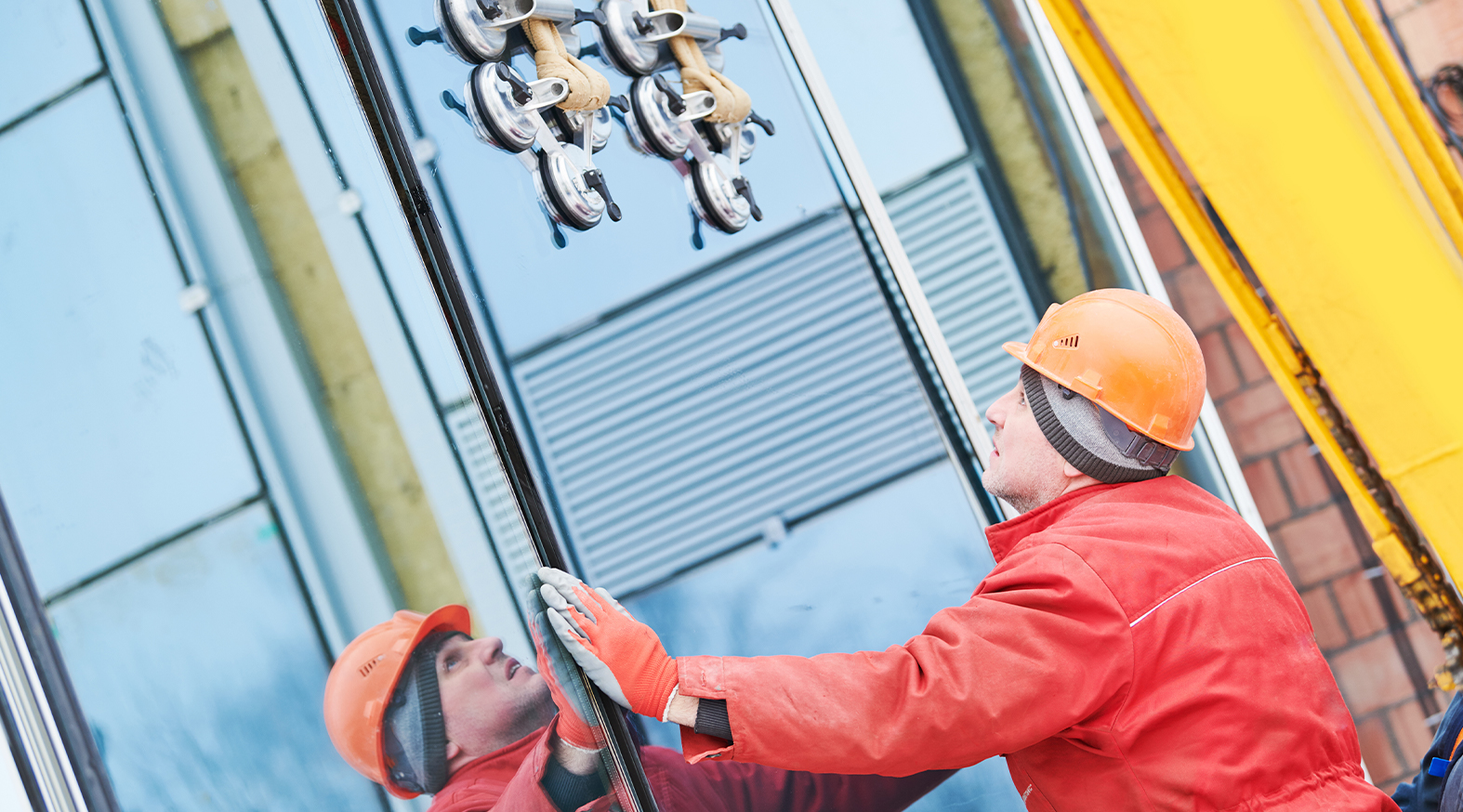The glazing industry is uniquely positioned to focus on safety. As an inherently heavy and fragile material, precautions must be taken to prevent glass damage and, more importantly, to ensure the safety of employees.
Glass continues to be a preferred building material because of its ability to increase daylighting and preserve views. As demand increases, it becomes all the more important to focus on contractor safety during installation.
At CRL, we recommend these eight glass-handling equipment and protective gear items to help maximize safety at every stage of the installation process.
- Specialized glass handling tools and equipment can increase efficiency while minimizing the risk of injury. Hand-held vacuum lifters are essential for most glazing jobs. Vacuum lifters provide a strong, pump-activated grip that prevents glass from slipping during transport and installation. Various weight capacities are available, as well as models made specifically for handling curved or textured glass.
- A back-support belt should be worn when handling glass, regardless of its weight and size. Proper lifting technique should also be observed.
- To maximize speed and minimize accidents, use vacuum lifters in conjunction with a glass dolly. Glass dollies alleviate the labor required to transport heavy glass panels. They also simplify the loading and unloading process. For the best performance, select a dolly with rugged, all-terrain wheels and a robust clamping system that secures glass in place.
- Glass lifters are a necessity for projects that specify large glass panels. They incorporate several high-performance vacuum cups to safely move and position heavy glass. Glass lifters are typically crane operated and offer convenient 360-degree rotation. Lifting capacities vary so be sure to consult the product manufacturer to determine what glass lifter is right for the job.
- Glaziers must wear protective gear while on the job to reduce the risk of injury. Safety goggles are a necessity in most cases as they protect the eyes from airborne debris. Tinted goggles are recommended when working outdoors to reduce glare.
- Hard hats should be worn at all times to protect the head from impact. In general, hard hats should be replaced every five years, unless they’re subjected to extreme weather conditions and/or wear and tear. In these instances, they should be replaced every two years. As with all safety gear, confirm that the hard hat complies with OSHA standards.
- Cuts and lacerations pose a real danger in the event of glass breakage, making specialized glass handling gloves an important resource. Rubber gloves with a gauntlet cuff work best as they also provide wrist protection. Look for a corrugated finish because it produces a stronger grip that helps prevent glass slippage.
- Falls are one of the leading cases of traumatic injury in the construction industry so it’s imperative that proper precautions are taken, particularly in jobs with higher elevations. The most important pieces of equipment to prevent falls are a safety harness and lanyard. There are several styles available but for best results, select a full-body modular safety harness. They’re designed to distribute impact forces evenly. Extra straps also provide added comfort and protection. Be sure to follow proper procedures for securing the harness and lanyard.
Maintaining a safe work environment for all employees is of the utmost importance. It’s important to us at CRL, and we know it’s important to our customers. You can work smarter, not harder, with the right tools and equipment.
Injury prevention begins with education. The Occupational Safety and Health Administration (OSHA) is a valuable resource for small- to medium-sized companies to learn more about workplace safety guidelines. OSHA has a number of training and compliance assistance programs available, including free on-site consultations. Visit
osha.gov/consultation to learn more.





